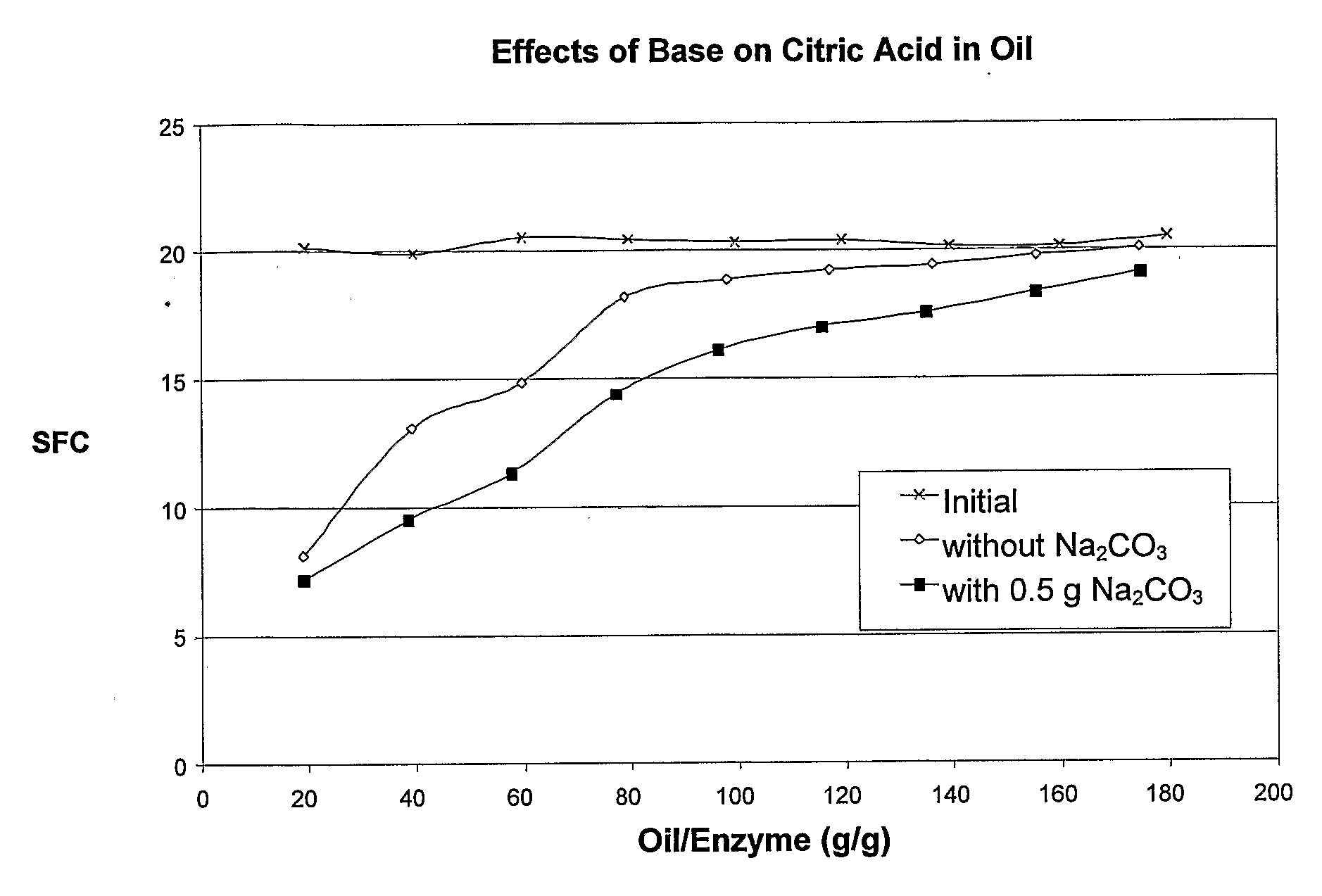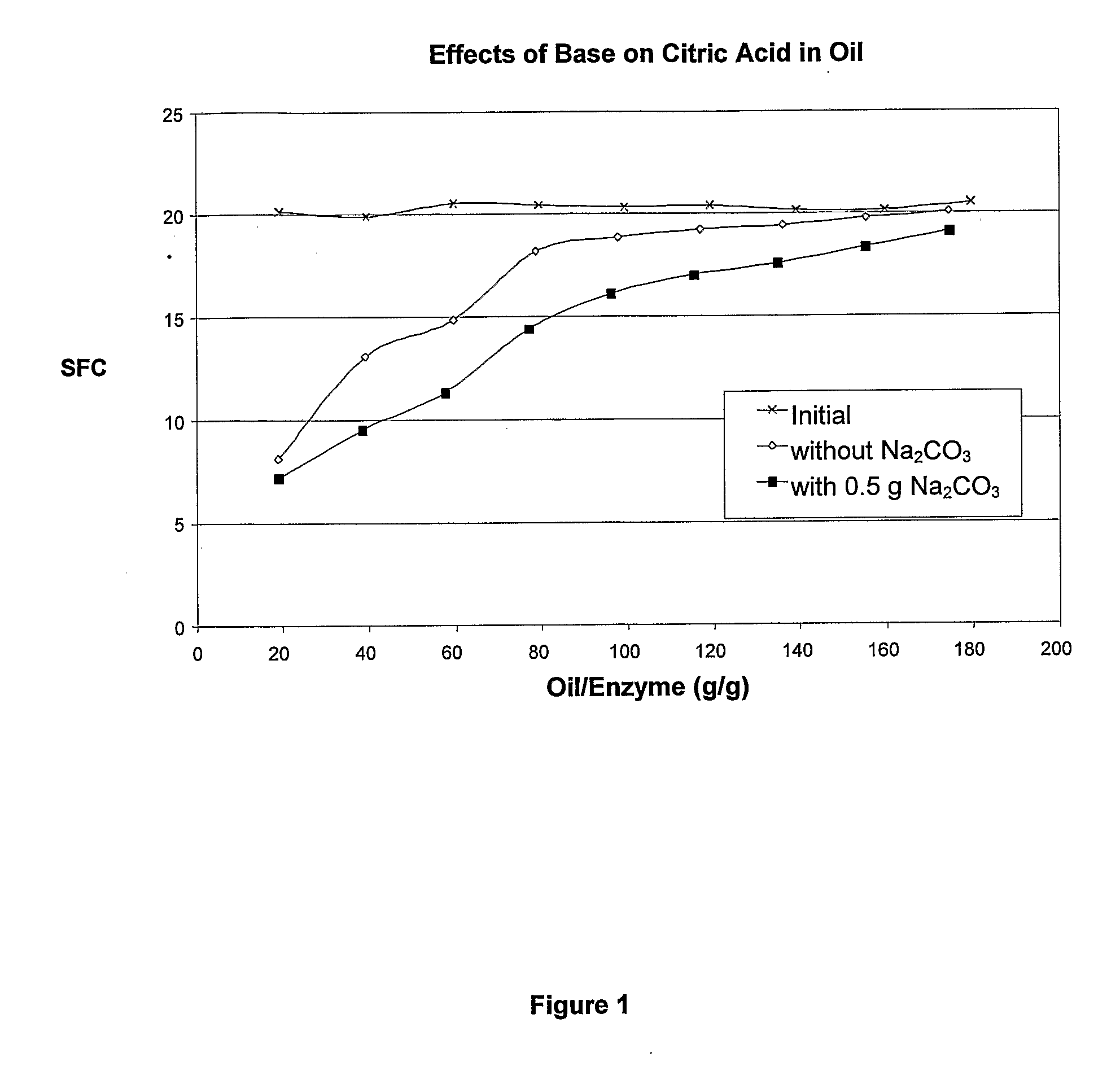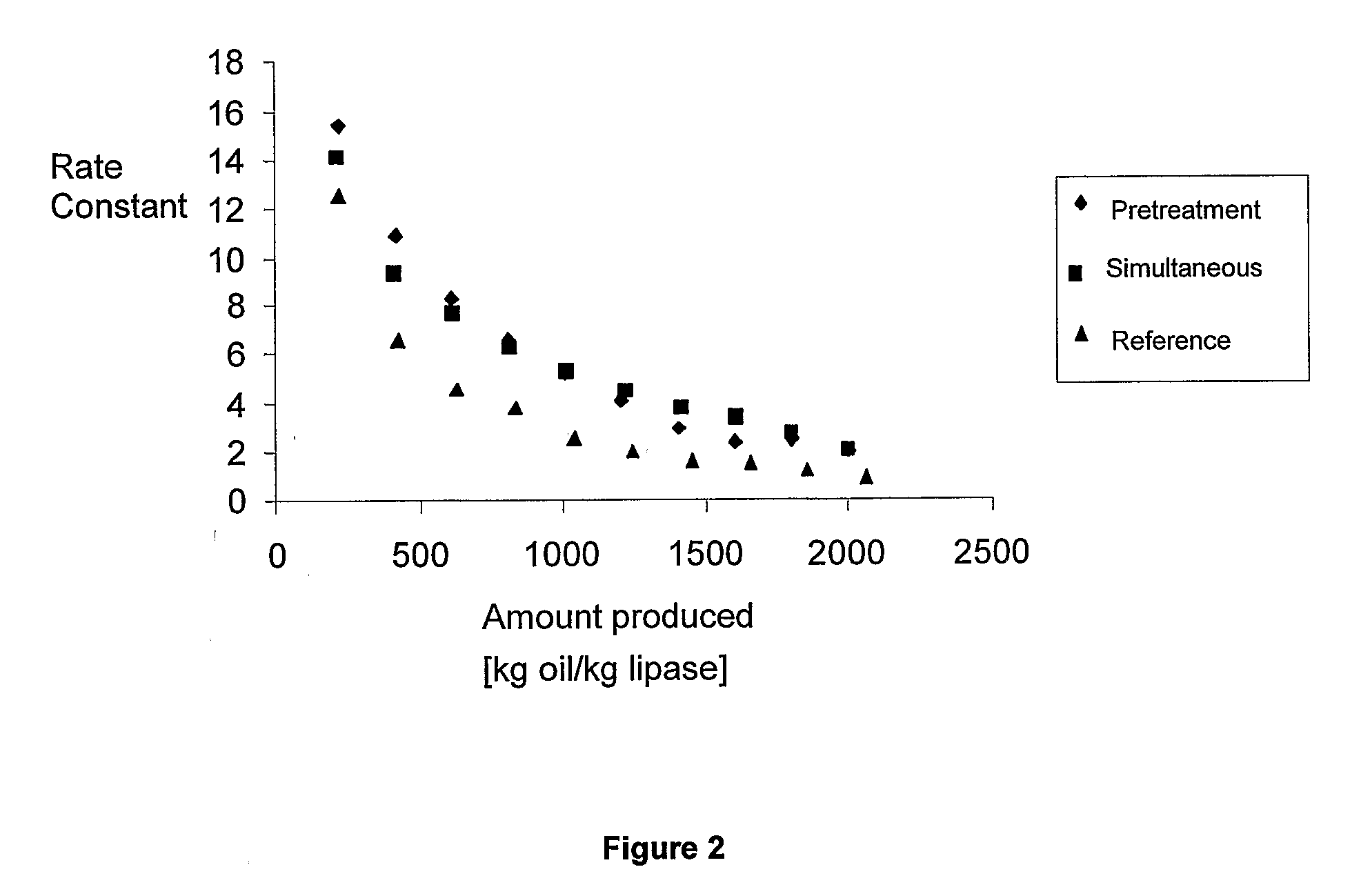Enzymatic Oil Interesterification
a technology of enzymatic oil and interesterification, which is applied in the field of improved process of enzymatic oil interesterification, can solve the problems of negative effect of lipase interesterification performance and deteriorating effect on the stability of these oils
- Summary
- Abstract
- Description
- Claims
- Application Information
AI Technical Summary
Benefits of technology
Problems solved by technology
Method used
Image
Examples
example 1
Impact of Base on Lipase Interesterification Performance in Oil Containing Chelating Agent
[0079]This experiment was carried out to investigate the effect of adding a base (Na2CO3) to oil containing citric acid.
Preparing Oil Blend with citric acid
[0080]The experiment was carried out using 27% fully hydrogenated soy oil (“Soy Flakes” Bunge Foods lot 345M4-T106R3) blended into commercial soy oil (“Master Chef Salad Oil” C&T Refinery, Charlotte, NC Lot L3C27 1337).
[0081]Preparation of oil blend: Heat 73 grams fully hydrogenated soy oil to 70-80° C. and add 27 grams soy flakes. Mix and heat until all solids have melted. Add citric acid (10-30 ppm) and stir for about 30 minutes. Fill in plastic bottles and store in freezer until use.
Interesterification of Oil Blend
[0082]0.5 gram sodium carbonate (“sodium carbonate, anhydrous, analytical reagent, granular” Mallincrodt catalog number 7525) was poured into 110 gram oil blend together with 0.5 gram immobilized Lipase A. Base and enzyme were a...
example 2
[0085]Enhanced Performance of Immobilized Lipase by Pre-treatment of Oil with Sodium Carbonate
[0086]The performance of immobilized Lipase A was tested by interesterification in the multiple batch experiments. A blend of fully hydrogenated soy bean oil and soy bean oil (blend ratio 27:73 (w / w)) was used.
[0087]In multiple batch reactions, the enzyme is reused in a series of batch reactions. The single batch reaction is carried out with essentially constant oil to enzyme ratio, constant reaction time and a constant temperature of 70° C. The level of interesterification is quantified by measuring the solid fat content (SFC) of the fat at 40° C.
[0088]The batch reactor is a 250 ml square shaped bottle. During the reaction the bottle is continuously shaken in an orbital shaker. The orbital diameter is 1 inch and the shaker is orbiting at 200 rpm.
[0089]A batch of immobilized Lipase A (batch LA350005) and sodium carbonate (Na2CO3) was tested by 1) Na2CO3 pre-treatment of the oil prior to int...
example 3
[0111]The Productivity Achievable with Lipase A, Measured by MBA (Multiple Batch Assay) of the Oil Enzyme Combination
[0112]In this experiment the interesterification productivity was tested using the MBA (multiple batch assay) described in the “Materials & Methods” section above. Oil blends were mixtures of palm stearin and coconut oil where the coconut oil was either refined or refined and bleached. These blends were pretreated with Na2CO3 and interesterified with immobilized Lipase A and the productivity of the enzyme in the oil was compared to references that were not Na2CO3 pretreated.
TABLESummary of Productivity ResultsProductivitykg oil / kg enzyme10% relative lipase activitySampleleft when productivity testedRefined OilNoneReference1,650Na2CO3Pretreated3,620Bleached OilNoneReference210Na2CO3Pretreated3,250
[0113]The productivity of the refined oil sample was found to be 1,650 kg oil / kg enzyme. When pretreated with Na2CO3 the productivity increased to 3,620 kg oil / kg enzyme.
[0114...
PUM
| Property | Measurement | Unit |
|---|---|---|
| temperature | aaaaa | aaaaa |
| temperature | aaaaa | aaaaa |
| solid fat content | aaaaa | aaaaa |
Abstract
Description
Claims
Application Information
 Login to View More
Login to View More - R&D
- Intellectual Property
- Life Sciences
- Materials
- Tech Scout
- Unparalleled Data Quality
- Higher Quality Content
- 60% Fewer Hallucinations
Browse by: Latest US Patents, China's latest patents, Technical Efficacy Thesaurus, Application Domain, Technology Topic, Popular Technical Reports.
© 2025 PatSnap. All rights reserved.Legal|Privacy policy|Modern Slavery Act Transparency Statement|Sitemap|About US| Contact US: help@patsnap.com



